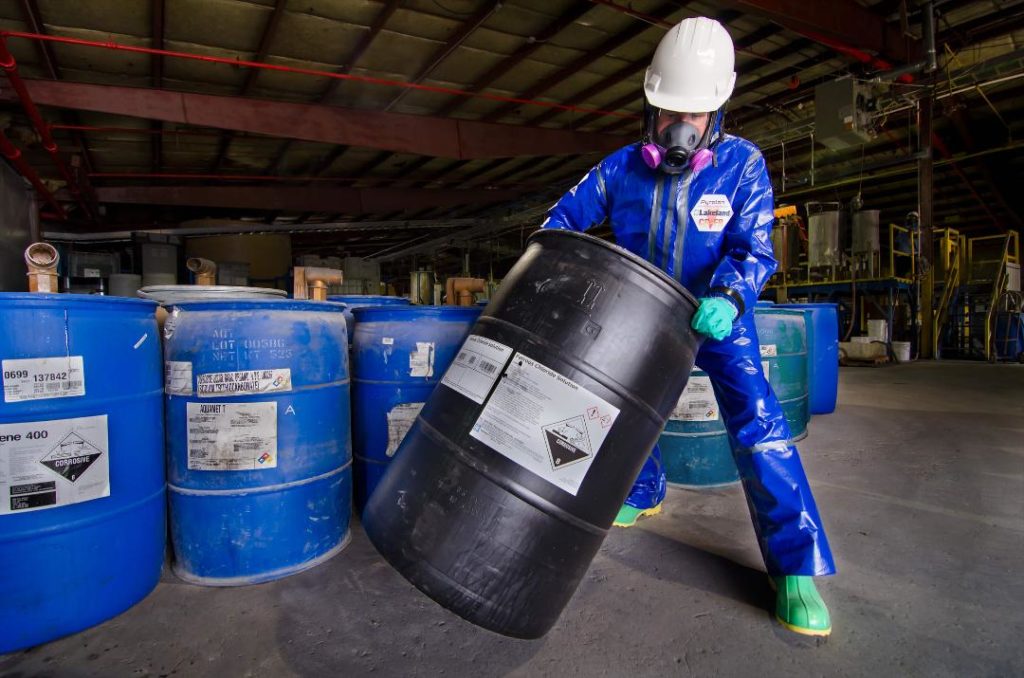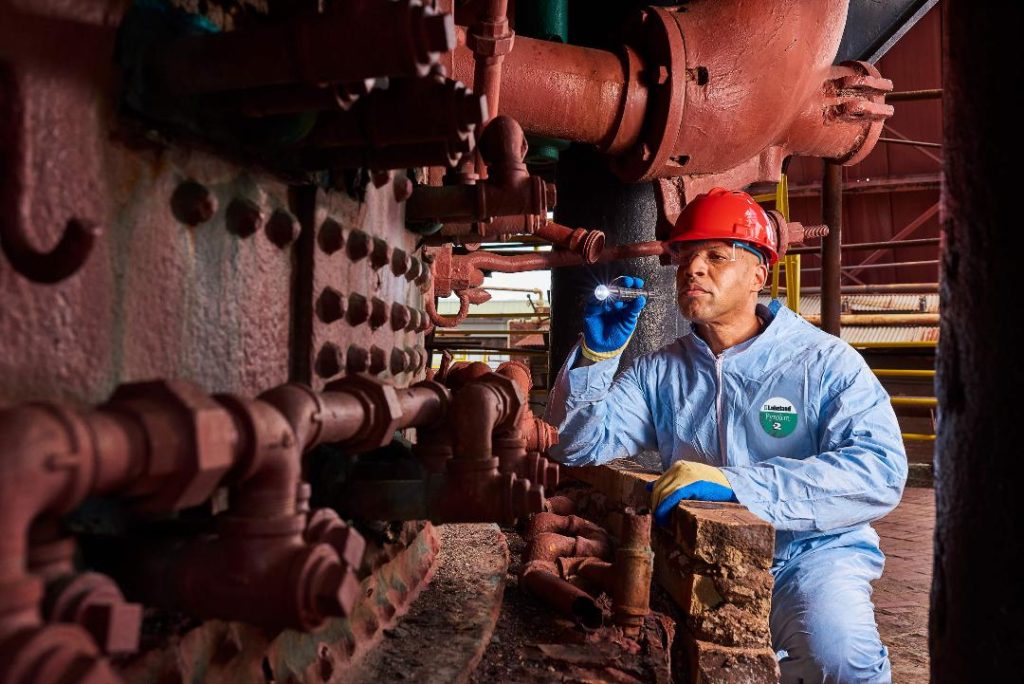New standard reduces exposure gaps to multiple hazards
by Glenna B. Musante
Improving safety apparel for workers operating in hazardous situations is a constant effort by the textile industry, but a task not always easily accomplished. Hazardous materials professionals can be exposed to any number of chemical, biological and flammable materials in the same environment, according to The Institute of Hazardous Materials Management (IHMM). But much of the Personal Protective Equipment (PPE) apparel and outerwear available on the market is designed to protect workers from a specific, or limited, hazard or hazardous material. As a result, gaps can exist in safety apparel that have the potential to jeopardize the health, life and limb.

A new standard
In response to these gaps, the International Safety Equipment Association (ISEA) has developed a new standard that establishes performance and labeling requirements for what is called “secondary” single-use, flame-resistant (FR) protective clothing. Secondary apparel refers to disposable PPE outerwear worn over primary PPE apparel.
The new standard, which has been published by the American National Standards Institute (ANSI) in cooperation with ISEA, is called ANSI/ISEA 203-2018. The standard covers disposable, single-use, flame-resistant apparel worn in occupational environments where there are flame hazards in addition to exposure to contaminants, such as grease, oil or welding spatter, that can become attached to the primary flame-resistant garments worn underneath. Secondary FR garments are routinely used in hazmat remediation, pharmaceutical and laboratory operations, and petrochemical processing facilities.
Oil rig and utility workers, for example, are often maneuvering through environments that pose multiple chemical and flame-related hazards. PPE apparel designed to be flame resistant, may not also provide protection from chemical contaminants. At the same time, PPE outerwear specifically designed to protect workers from debris or chemical splatter may, in fact, be flammable.
Current options
Typical disposable apparel designed for protection from chemical contaminants is made from polypropylene with a polyethylene barrier, said Kyle Kerbow, vice president for the U.S. and Mexico for Lakeland Industries, which manufactures and sells PPE apparel. He adds that polypropylene/polyethylene configured disposables are cost effective in a number of ways, but both materials are flammable.
Polypropylene, for example, is a lightweight, breathable fabric appropriate for wear in certain non-hazardous workplaces and a lower-cost solution than permanent PPE gear and apparel. Polypropylene can be very effective at protecting workers against dirt and grime, but not suitable as a secondary cover for permanent FR gear.
Permanent flame resistant work apparel is often paired with disposable outerwear to protect the permanent gear from chemical contamination. If the secondary outerwear is not also flame resistant, workers in that setting will be at risk of serious injury and burns.
Settings or situations where secondary single-use flame resistant protective clothing is worn over primary flame resistant protective clothing can include chemical processing; hazardous materials remediation; pharmaceuticals operations; paint spraying; tank cleaning; laboratory operations; petrochemical operations; general manufacturing; bulk chemical transfer and handling operations; general maintenance; and hazardous materials clean-up operations.
What is “hazardous?”
Materials formally classified as hazardous by U.S. agencies (the EPA, OSHA and the DOT) include but are not limited to any biological, chemical or radiologic that has the potential to harm humans, animals or the environment. This includes carcinogenic materials, toxic agents, irritants, corrosives, biological agents that can damage lungs, eyes, skin, mucous membrane and materials that are flammable or explosive.
“There has long been recognition that a work environment may present competing hazards and that protection against all of the hazards cannot be achieved through use of a singular protective clothing item,” said Cristine Fargo, vice president, Operations and Technical Services at the International Safety Equipment Association.
For example, FR garments engineered to protect against flash fire or arc hazards, may stop being protective if contaminated by materials such as oil, paint or grease.

Pyrolon® Plus 2 thermally protective and arc-rated secondary disposable PPE coveralls are flame resistant and provide chemical protection. Photo: Lakeland Industries Inc.
Brian Lyons, Vice President of International Enviroguard and chairman of ISEA’s Protective Apparel Group, agreed. “ISEA recognized the myriad of standards addressing primary FR garments worn to protect workers from flame exposures. What had been missing was a standard for overgarments that can be used as part of a protective ensemble in multi-hazard working environments,” he said in a statement issued by ANSI on the new standard.
Lyons added that workers can be assured that secondary PPE overgarments covered by this standard will not reduce the thermal performance of the primary clothing worn underneath to protect workers from flame hazards. Primary FR clothing is much needed, yet often expensive, he explained. Disposable PPE outer apparel is often used to extend the life of permanent PPR apparel, in addition to providing a secondary level of safety for workers.
“It’s important to reiterate that [this standard applies to] secondary, single-use FR garments [worn] in conjunction with wearing primary garments offering flame resistance protection,” says Fargo. This includes multiple configurations of garments including coveralls, pants and jacket, aprons and sleeves and encapsulating suits.
ANSI/ISEA 203-2018 was prepared by members of the Protective Apparel of ISEA and included, but was not limited to, participation by Ansell Protective Products, DuPont Personal Protection, Gentex Corporation, International Enviroguard, Lakeland Industries Inc., 3M and National Safety Apparel, to name a few.
A PDF that covers all of the details related to ANSI/ISEA 203-2018 is available on the ISEA website at https://safetyequipment.org/product/ansi-isea-203-2018/.
Glenna B. Musante is a freelance writer who specializes in the textile industry.
 TEXTILES.ORG
TEXTILES.ORG


